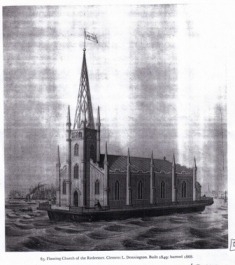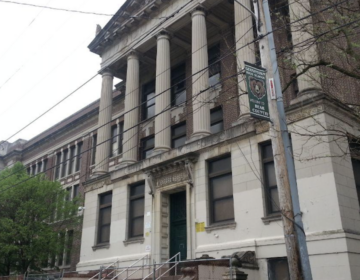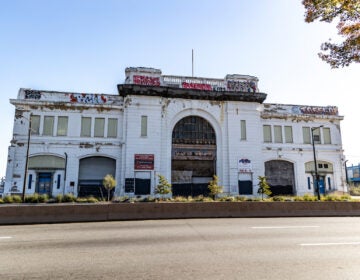Seamen’s Church Institute

Seamen’s Church Q&A
Respondent: Fr. Jim von Dreele
1. What is your congregation’s role in the history of the waterfront? At one time, you even occupied a floating church that was towed up and down the Delaware River to minister to seamen in need! Even after the floating church was abandoned, you have also moved around much more than other Old Philadelphia Congregations.
[Jim Von Dreele] This ministry was an outgrowth of some laymen of the Diocese that there was a need for a ministry to the thousands of seafarers coming into this busy port. It was based on the ministry started in the Port of New York 10 years earlier. The first facility was the Floating Chapel of the Redeemer (1849-59), a worship space that could accommodate 600. After it sank in the river, the ministry moved into sail lofts and later into local churches (Gloria Dei for one example). In 1919 the Seamen’s Church Institute was formally incorporated as a non-profit ecumenical agency for the Port of Philadelphia and it ceased to be an official part of the Episcopal Diocese. We have always been affiliated with the Episcopal Church, however, as all the directors have been Episcopal priests.
Around this time, SCI built a large hotel in the Society Hill section of the City. It had 240 rooms, cafeteria and chapel. There was a need in those days for safe, inexpensive lodging for seafarers who might spend many weeks waiting for a voyage. In the mid 1950’s the US government acquired the property for the new Independence Park. We moved into a smaller hotel around 12th and Locust. This turned out to be a seafarer retirement home. In the mid 1970’s SCI got out of the hotel business and redirected its efforts to the river and active seafarers. From 1976 to 2003 we occupied the old Girard Corn Exchange Bank on 3rd and Arch Streets. During the later period at Arch Street we began to extend our ministry to whole Delaware River in PA and NJ (28 terminals along 125 miles of the river) by adding more staff and programs.
In a wonderful sequence of events, a developer in 2002 gave SCI an unsolicited offer to buy the building. The Board, recognizing the need for additional space and the liability of a 100 year old building, jumped at the offer. We now own the former Cofco furniture showroom and warehouse. Our Center is also the home for two other maritime related maritime non-profits: Ports of the Delaware River Maritime Association (PMTA) and City Sail. The Center serves not only as a comfortable retreat for seafarers but also as a major meeting place for the Maritime Community. The new Center has changed our mission so that we are also a Port Center. This is a unique model of ministry in the Church as the business community expects and demands the Church’s presence in it work and life.
2. How has your congregational make-up and ministry evolved over the past fifty years? Your ministry now includes both the ports of Philadelphia and Camden. What is the place of merchant seamen in Philadelphia today, and what are their needs, spiritual and otherwise?
[Jim Von Dreele] Our ministry has become more proactive. Because of the sheer size of our “parish”, we must be on the ships (1,900 a year) on a daily basis. This is truly a mission driven ministry to the seafarers and the maritime business community. In a recent survey by the International Transport Workers’ Federation (ITF) on seafarer welfare, four distinct priorities emerged from the seafarers: transportation to shopping and the center, communications (phone and email), pastoral counseling and worship opportunities. We are also involved in advocacy issues regarding working conditions, pay issues and security. As security continues to tighten and the turn around times of ships shortens, SCI will be needed even more on the ships. We have a staff of 15 plus 3 additional chaplains from other denominations to assist in meeting seafarer needs on a 7 day a week basis.
3. What are some of your thoughts about the gentrification of Old City in the past decade? How has this affected you and your mission and your congregation?[Jim Von Dreele]
[Jim Von Dreele] While I enjoyed working in Old City, our move four years ago to the borderline of Old City and Northern Liberties was very beneficial for SCI. Old City has become too congested and we simply ran out of space to grow. We have much better access to the highways to serve the Port.
4. What are your feelings about the proposed waterfront developments, not just casinos but also residential and commercial. How do you feel these will affect your ministry and your house of worship?
[Jim Von Dreele] The residential, commercial and casino developments along the river are a detriment to the maritime industry. These developments take away very profitable working environments that employ thousands of people in high paying jobs. The Foxwoods casino will have a major detrimental impact on existing terminals in South Philadelphia. Delaware Ave. is already quite congested and it will be more difficult to get on and off the piers. Traffic congestion is a major problem for SCI in delivering services to our piers. Once maritime property to taken away, it will never come back.
5. What do you see as the future of the Seaman’s Church?
[Jim Von Dreele] Our future is bright in that cargo will double in the next 7-10 years and there will always be a need for our services. We need more resources of staff and finances to meet this challenge. Fortunately, we have strong support in the maritime and church communities
WHYY is your source for fact-based, in-depth journalism and information. As a nonprofit organization, we rely on financial support from readers like you. Please give today.






